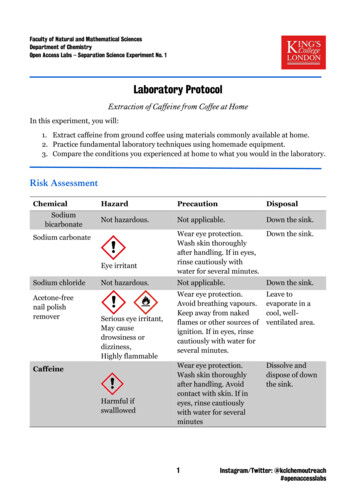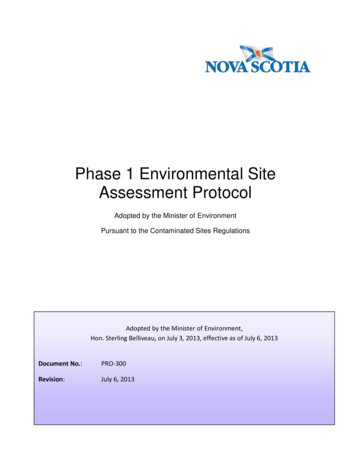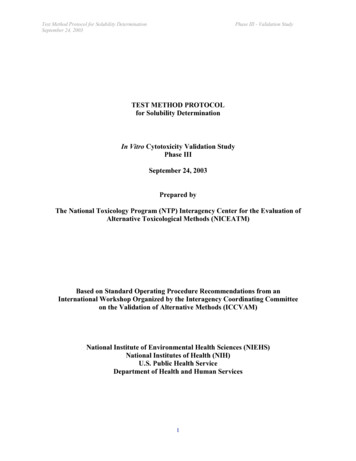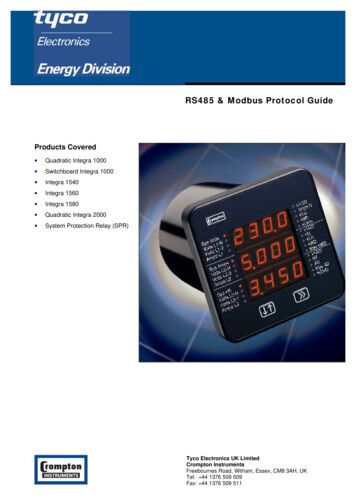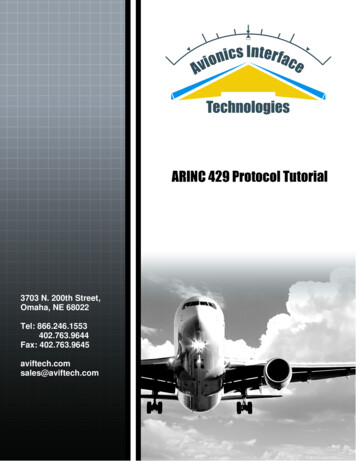
Transcription
ARINC 429 Protocol Tutorial3703 N. 200th Street,Omaha, NE 68022Tel: 866.246.1553402.763.9644Fax: 402.763.9645aviftech.comsales@aviftech.com
ARINC 429 Protocol TutorialDoc No. 40100001
Omaha Office3703 N. 200th Street,Omaha, NE 68022Tel: 866.246.1553402.763.9644Fax: 402.763.9645Ohio Office2689 Commons Boulevard,Beavercreek, OH 45431Tel: 937.427.1280Fax: 937.427.1281 ext. 202Local Sales and Support Staff located in19 Statesfind the closest to you at:www.aviftech.com
Table of Contents.1Section 1 About this Manual.3Section 2 ARINC429 SpecificationOverview2.1 Overview of ARINC. 42.2 History of ARINC429. 5.6Section 3 The ARINC429 Specification3.1 Cable Characteristics. 83.2 Transmission.9Characteristics3.3 Waveform Parameters. 113.4 Word Formats. 133.4.1 Parity. 143.4.2 Sign/Status Matrix. 153.4.3 Data. 173.4.4 Data Types. 183.4.5 Source/Destination.Identifier203.4.6 Label. 21Section 4 ARINC Contact .23InformationAIT - ARINC 429 ProtocolII
1About this ManualThis manual was developed to provide a general overview of the ARINC429Specification, its characteristics and applications. The ARINC429 Specification is acopy written document owned by Aeronautical Radio, Inc. who is responsible for itsmodification and distribution.This manual refers predominately to Part 1 of the 429 Specification outlining thefunctional description, electrical characteristics and word formats. Complete andcurrent copies of the Specification can be obtained from Aeronautical Radio, Inc.Contact information is made available on page 18 of this manual.Avionics Interface Technologies (AIT) provides Commercial-Off-The-Shelf (COTS)products to design, produce, integrate, test and troubleshoot all systems andcapabilities mentioned in this ARINC429 Tutorial Manual.AIT software products also support full Remote Terminal production testing, full busanalysis and complete system emulation and test capabilities per ARINC429specifications.AIT is also a leading designer and manufacturer of other high performance test andsimulation modules, databus analyzer software and systems for MIL-STD-1553 A/B,MIL-STD-1760 and MIL-STD-1760E Applications, AFDX/ARINC664, and FibreChannel. Supported hardware platforms include PCI/PCI-X Compact PCI, PXI,VME, VXI, PMC, XMC, and USB. Information about all AIT products can be found athttp://www.aviftech.com.1AIT - ARINC 429 Protocol
THIS PAGE INTENTIONALLY LEFT BLANKAIT - ARINC 429 Protocol2
2ARINC429 Specification OverviewThe ARINC429 Specification defines the standard requirements for the transfer ofdigital data between avionics systems on commercial aircraft. ARINC429 is alsoknown as the Mark 33 DITS Specification. Signal levels, timing and protocolcharacteristics are defined for ease of design implementation and datacommunications on the Mark 33 Digital Information Transfer System (DITS) bus.ARINC429 is a privately copywritten specification developed to provideinterchangeability and interoperability of line replaceable units (LRUs) in commercialaircraft. Manufacturers of avionics equipment are under no requirement to comply tothe ARINC429 Specification, but designing avionics systems to meet the designguidelines provides cross-manufacturer interoperability between functional units.3AIT - ARINC 429 Protocol
2.1Overview of ARINCARINC stands for Aeronautical Radio, Inc., a private corporation organized in 1929,and is comprised of airlines, aircraft manufacturers and avionics equipmentmanufacturers as corporate shareholders. ARINC was developed to producespecifications and standards for avionics equipment outside the government fordomestic and overseas manufacturers.ARINC copywrites and publishes standards produced by the Airlines ElectronicEngineering Committee (AEEC). The AEEC is an international standardsorganization made up of major airline operators, avionics industry manufacturers andARINC members.The AEEC sets standards for avionics equipment and systems and provides industrydefined requirements for standardization of form, fit and function between variousmanufacturers products.ARINC publishes the AEEC produced standards under three types of documents:1. ARINC CharacteristicsCharacteristics are definitions of the form, fit and function of avionicsequipment. These documents are equipment specific and define how a unitwill operate. The ARINC 500 Series of Characteristics define older analogavionics equipment where the ARINC 700 Series are more current documentsand are typically digital versions of the analog specs.400 Series documents are general design and support documentation for the500 Series avionics equipment characteristics.600 Series documents are general design and support documentation for the700 Series avionics equipment characteristics.2. ARINC SpecificationsSpecifications are used to define Physical packaging and mounting of avionics equipment Data communications standards High level computer languagesThe ARINC429 Specification, Mark 33 Digital Information Transfer Systemfalls under the Specification document category.3. ARINC ReportsReports provide general information and best practice guidelines for airlines.Reports predominately refer to maintenance and support procedures.AIT - ARINC 429 Protocol4
2.2History of ARINC429The ARINC429 Specification developed out of the original commercial aviationdigital communication spec, the ARINC 419 Specification. The ARINC 419, firstreleased in 1966 and last revised in 1983, describes four different wiring topologies,including a serial, twisted shielded pair interface used by the Digital Air Data System(DADS), known as the ARINC 575 or DADS 575 Spec.This serial topology evolved into the ARINC429 Specification, first released asARINC429-1 in April 1978, and currently exists as ARINC429-15. ARINC429-15 wasadopted by the AEEC in 1995 and is comprised of 3 parts: ARINC Specification 429, Part 1-15: Functional Description,ElectricalInterface, Label Assignments and WordFormats ARINC Specification 429, Part 2-15: Discrete Word Data Standards ARINC Specification 429, Part 3-15: File Data Transfer TechniquesPart 1 addresses the buses physical parameters, label and address assignments,and word formats.Part 2 defines the formats of words with discrete word bit assignments.Part 3 defines link layer file data transfer protocol for data block and file transfers.5AIT - ARINC 429 Protocol
3The ARINC429 SpecificationThe ARINC429 Specification establishes how avionics equipment and systemscommunicate on commercial aircraft. The specification defines electricalcharacteristics, word structures and protocol necessary to establish buscommunication. ARINC429 utilizes the simplex, twisted shielded pair data busstandard Mark 33 Digital Information Transfer System bus.ARINC429 defines both the hardware and data formats required for bustransmission. Hardware consists of a single transmitter – or source – connected tofrom 1-20 receivers – or sinks – on one twisted wire pair. Data can be transmitted inone direction only – simplex communication – with bi-directional transmissionrequiring two channels or buses. The devices, line replaceable units or LRUs, aremost commonly configured in a star or bus-drop topology. Each LRU may containmultiple transmitters and receivers communicating on different buses. This simplearchitecture, almost point-to-point wiring, provides a highly reliable transfer of data.ARINC 429 System TopologiesA transmitter may ‘talk only’ to a number of receivers on the bus, up to 20 on onewire pair, with each receiver continually monitoring for its applicable data, but doesnot acknowledge receipt of the data.AIT - ARINC 429 Protocol6
A transmitter may require acknowledgement from a receiver when large amounts ofdata have been transferred. This handshaking is performed using a particular wordstyle, as opposed to a hard wired handshake. When this two way communicationformat is required, two twisted pairs constituting two channels are necessary to carryinformation back and forth, one for each direction.Transmission from the source LRU is comprised of 32 bit words containing a 24 bitdata portion containing the actual information, and an 8 bit label describing the dataitself. LRUs have no address assigned through ARINC429, but rather haveEquipment ID numbers which allow grouping equipment into systems, whichfacilitates system management and file transfers.Sequential words are separated by at least 4 bit times of null or zero voltage. Byutilizing this null gap between words, a separate clock signal is unnecessary.Transmission rates may be at either a low speed – 12.5 kHz – or a high speed –100kHz.7AIT - ARINC 429 Protocol
3.1Cable CharacteristicsThe transmission bus media uses a 78 W shielded twisted pair cable. The shieldmust be grounded at each end and at all junctions along the bus.ARINC429 Cable CharacteristicsThe transmitting source output impedance should be 75 W 5 W divided equallybetween Line A and Line B. This balanced output should closely match theimpedance of the cable. The receiving sink must have an effective input impedanceof 8k W minimum.Maximum length is not specified, as it is dependent on the number of sink receivers,sink drain and source power. Most systems are designed for under 150 feet, butconditions permitting, can extend to 300 feet and beyond.AIT - ARINC 429 Protocol8
3.2Transmission CharacteristicsARINC429 specifies two speeds for data transmission. Low speed operation isstated at 12.5 kHz, with an actual allowable range of 12 to 14.5 kHz. High speedoperation is 100 kHz 1% allowed. These two data rates can not be used on thesame transmission bus.Data is transmitted in a bipolar, Return-to-Zero format. This is a tri-state modulationconsisting of HIGH, NULL and LOW states.Transmission voltages are measured across the output terminals of the source.Voltages presented across the receiver input will be dependent on line length, stubconfiguration and the number of receivers connected. The following voltage levelsindicate the three allowable states:TRANSMITSTATERECEIVE 10.0 V 1.0 V0 V 0.5V-10.0 V 1.0 VHIGHNULLLOW 6.5 to 13 V 2.5 to -2.5 V-6.5 to -13 VIn bipolar, Return-to-Zero – or RZ – format, a HIGH (or 1) is achieved with thetransmission signal going from NULL to 10 V for the first half of the bit cycle, thenreturning to zero or NULL.A LOW (or 0) is produced by the signal dropping from NULL to –10 V for the first halfbit cycle, then returning to zero.With a Return-to-Zero modulation format, each bit cycle time ends with the signallevel at 0 Volts, eliminating the need for an external clock, creating a self-clockingsignal.An example of the bipolar, tri-state RZ signal is shown here:9AIT - ARINC 429 Protocol
ARINC429 Signal EncodingAIT - ARINC 429 Protocol 10
3.3Waveform ParametersPulse rise and fall times are controlled by RC circuits built into ARINC429transmitters. This circuitry minimizes overshoot ringing common with short rise times.Allowable rise and fall times are shown below for both bit rates. Bit and ½ bit timesare also defined.ARINC429 Signal Waveform ParametersHigh Speed11Low SpeedBit Rate100 kbps 1%12 – 14.5 kbps 1%1 bit time10 msec 2.5%(1/Bit rate) msec 2.5%½ bit time5 msec 5%(1 bit time/2) 5%Rise Time1.5 msec 0.5 msec10 msec 5 msecFall Time1.5 msec 0.5 msec10 msec 5 msecAIT - ARINC 429 Protocol
AIT - ARINC 429 Protocol 12
3.4Word FormatsARINC429 protocol uses a point-to-point format, transmitting data from a singlesource on the bus to up to 20 receivers. The transmitter is always transmitting, eitherdata words or the NULL state. Most ARINC messages contain only one data wordconsisting of either Binary (BNR), Binary Coded Decimal (BCD) or alphanumericdata encoded using ISO Alphabet No. 5. File data transfers that send more than oneword are also allowed.ARINC429 data words are 32 bit words made up of five primary fields: Parity – 1 bitSign/Status Matrix (SSM) – 2 bitsData – 19 bitsSource/Destination Identifier (SDI) – 2 bitsLabel – 8 bits32 31 30 29 28 27 26 25 24 23 22 21 20 19 18 17 16 15 14 13 12 11 10P SSMMSBDataLSB9SDI87654LabelThe only two fields definitively required are the Label and the Parity bit, leaving up to23 bits available for higher resolution data representation. Many non-standard wo
ARINC 429 Protocol Tutorial Doc No. 40100001. Omaha Office 3703 N. 200th Street, Omaha, NE 68022 Tel: 866.246.1553 402.763.9644 Fax: 402.763.9645 Ohio Office 2689 Commons Boulevard, Beavercreek, OH 45431 Tel: 937.427.1280 Fax: 937.427.1281 ext. 202 Local Sales and Support Staff located in 19 States find the closest to you at: www.aviftech.com. AIT - ARINC 429 Protocol II Table of
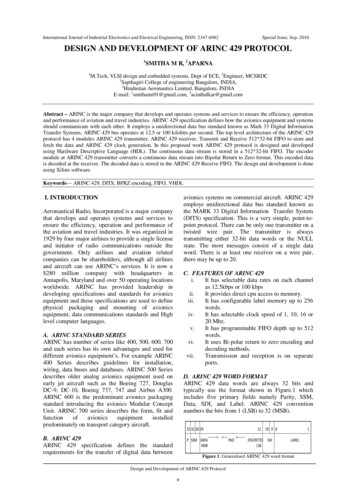

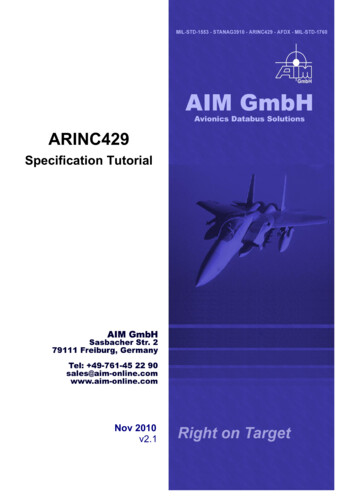
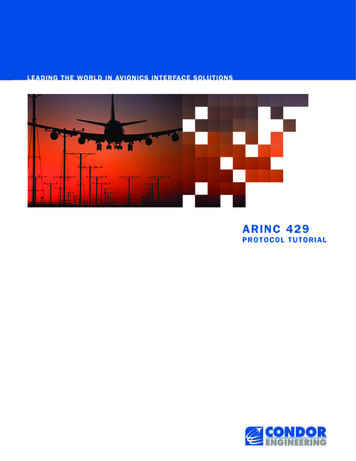
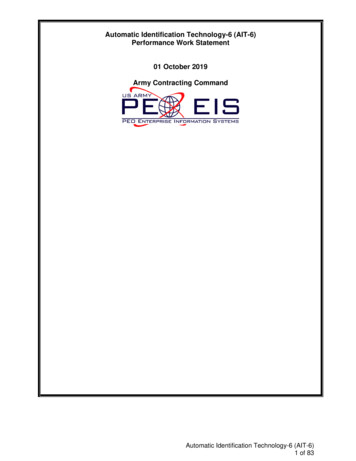
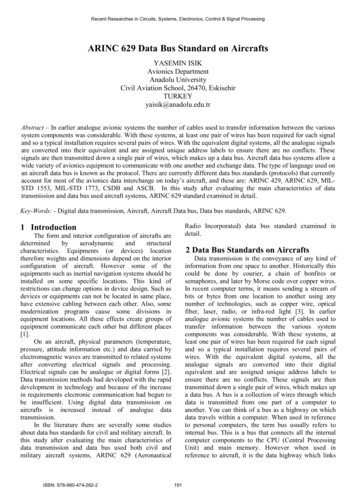
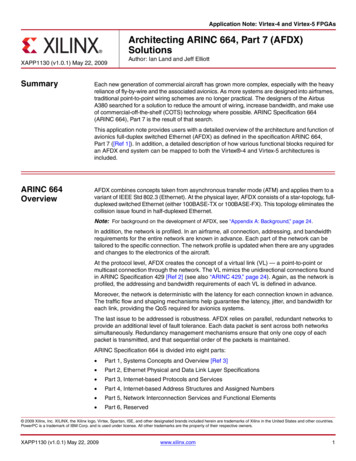
![Unreal Engine 4 Tutorial Blueprint Tutorial [1] Basic .](/img/5/ue4-blueprints-tutorial-2018.jpg)
